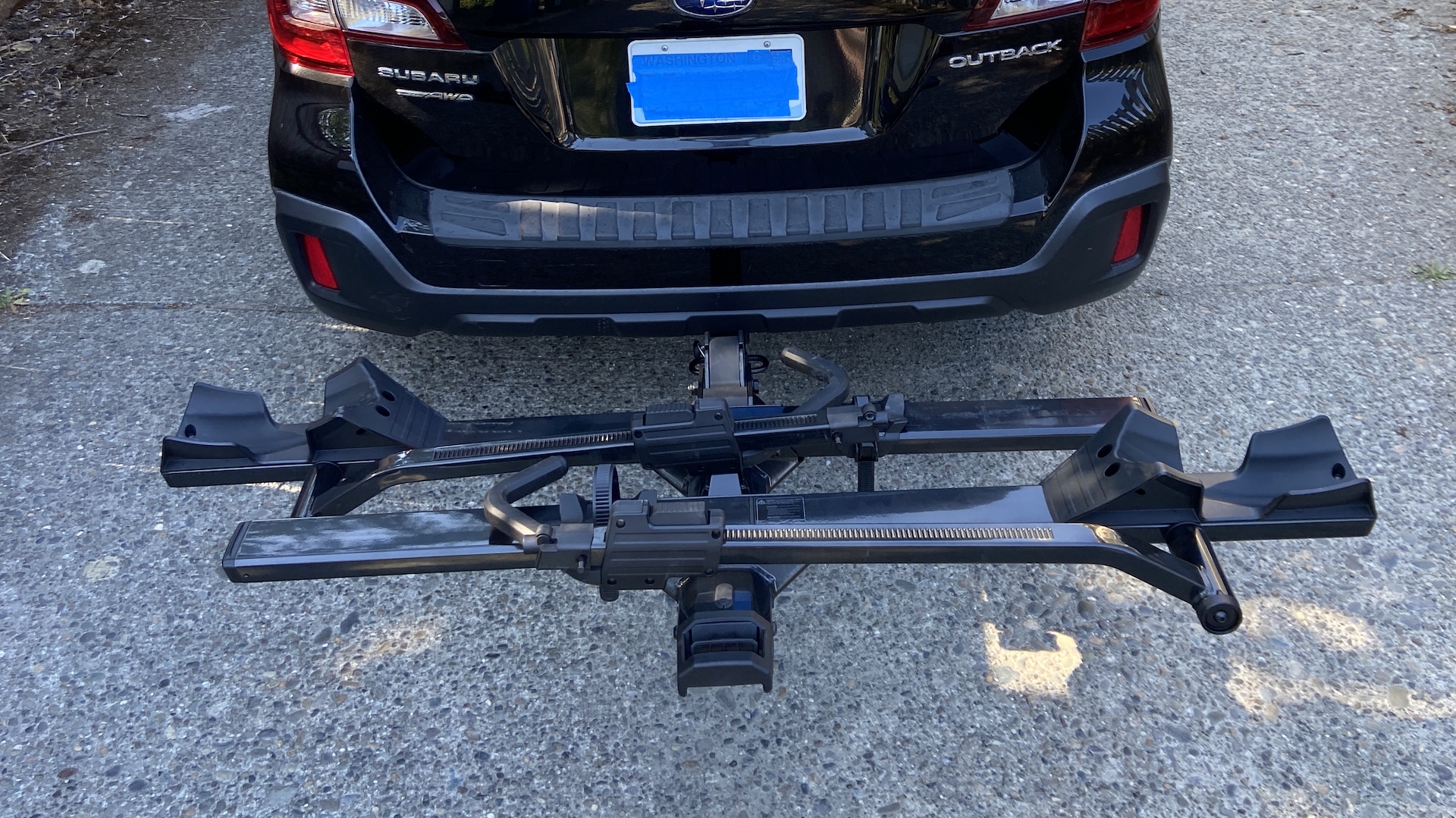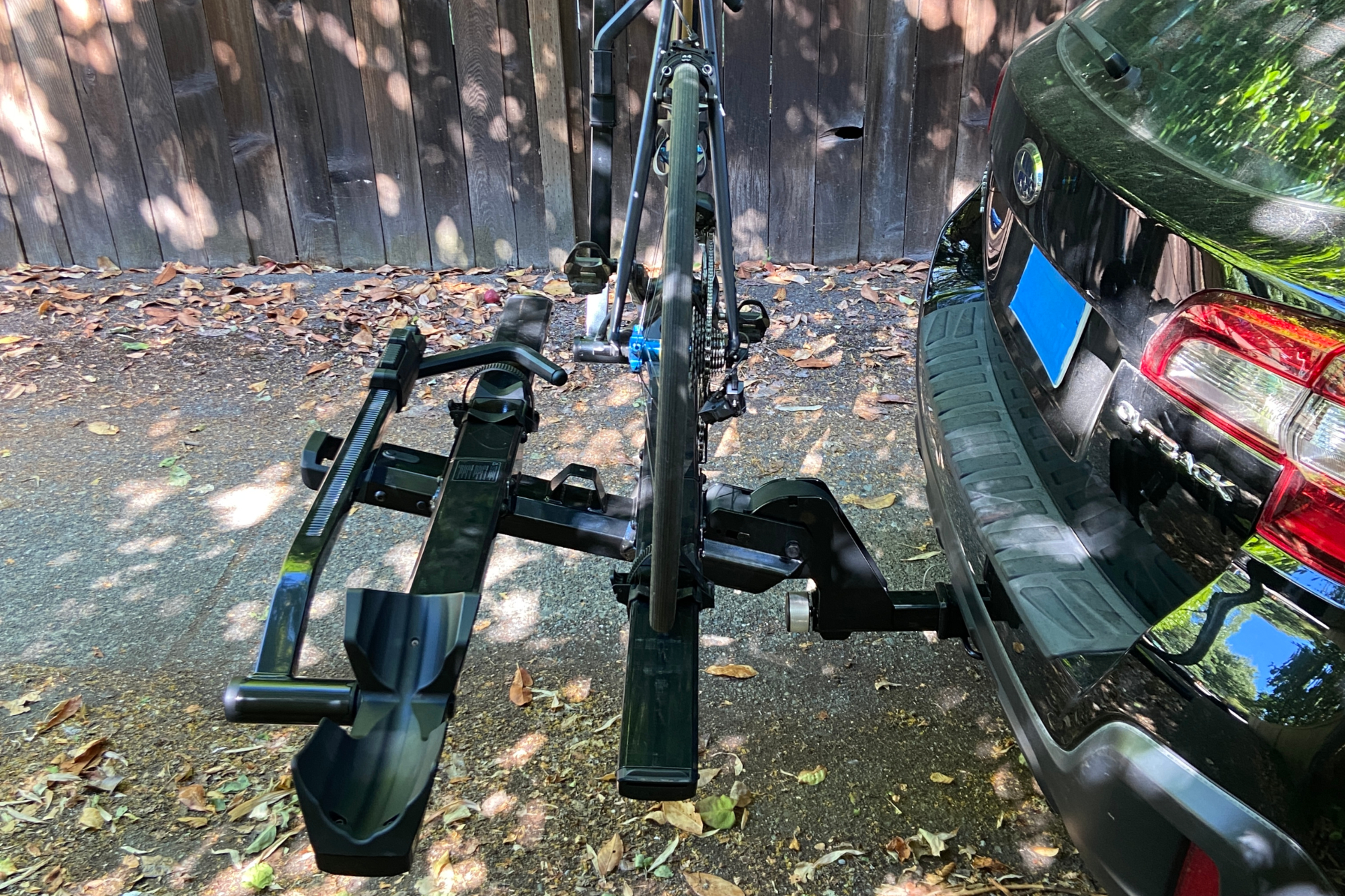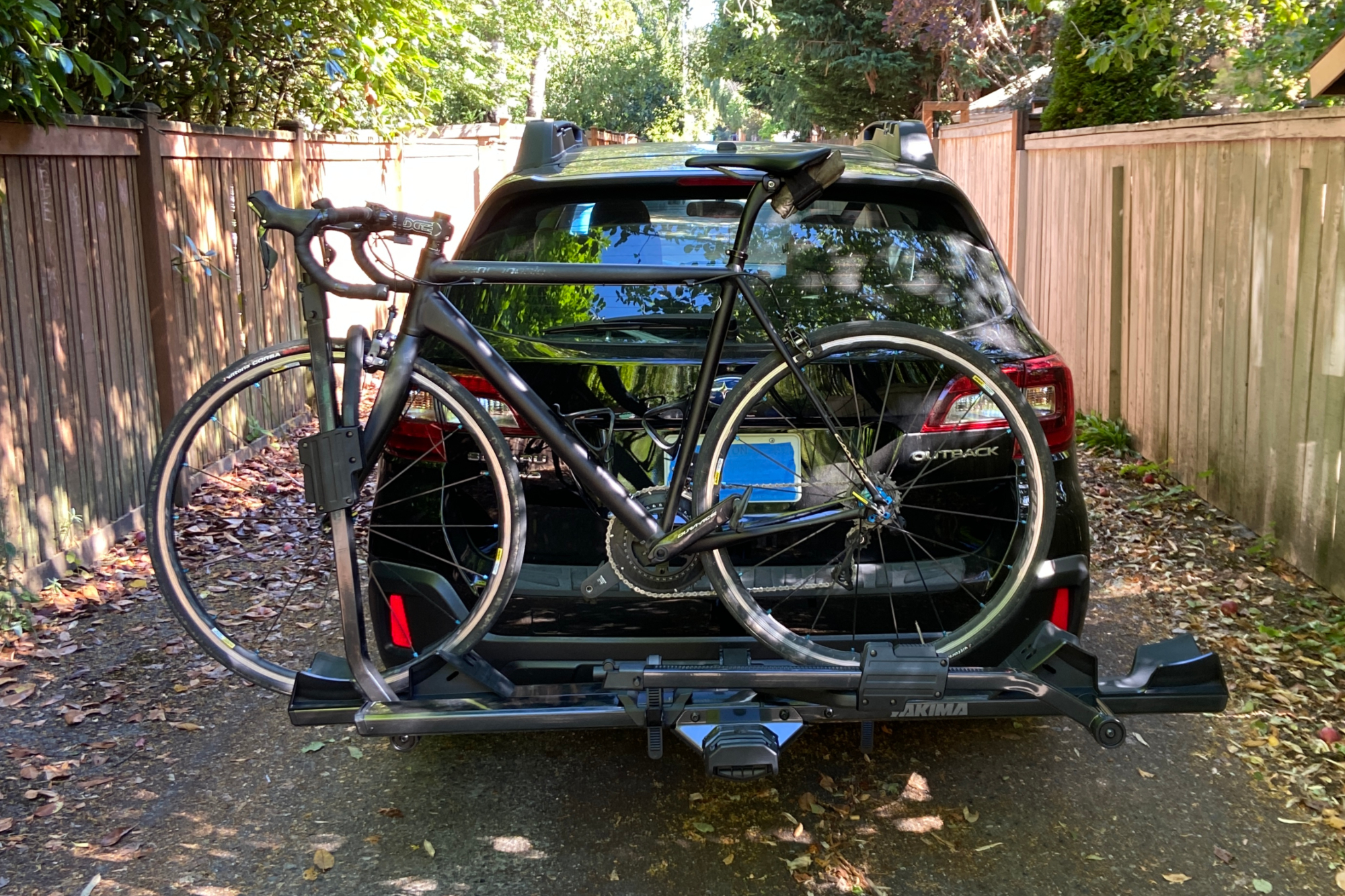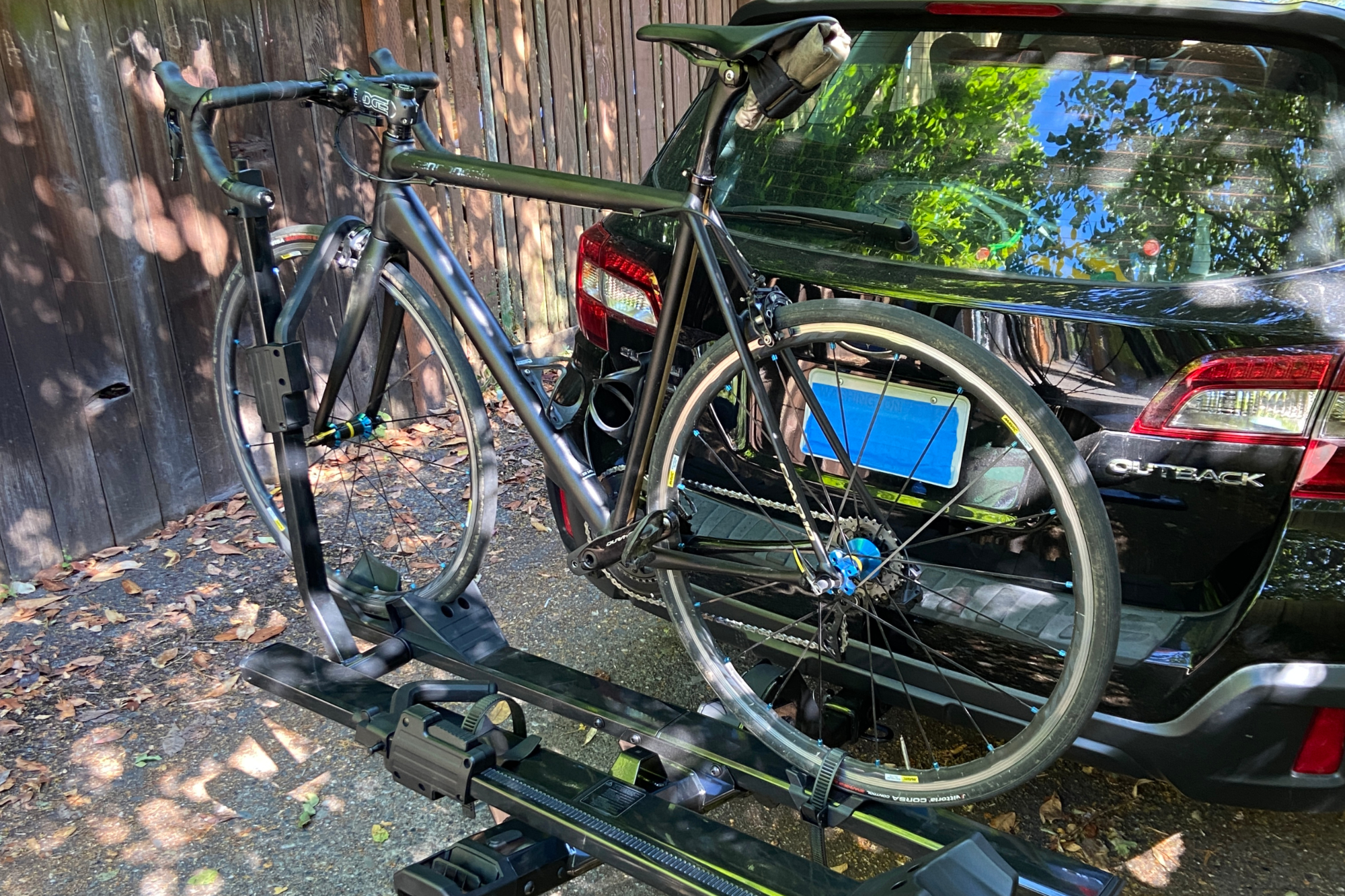Yakima StageTwo bike rack review - robust and gimmick-free
A heavy-duty rack designed for quick on and offs

The Yakima StageTwo takes a classic rack design and elevates it. Not only is it very robust, but everything about it works quickly and easily. Locks are included, and a variety of other accessories are available separately. Off the vehicle, storage may be a challenge for some.
-
+
Sturdy
-
+
Intuitive and functional use
-
+
Non-marring design
-
-
Heavy
-
-
Difficult to store
You can trust Cycling Weekly.

The Yakima StageTwo is a hitch-style bike rack that's versatile and sturdy when mounted on a car. The hitch-on and -off procedure is also straightforward and tool-free - as is the process for raising and lowering the rack between vertical (empty) and horizontal (full of bikes), with the handle well-located and easy to operate.
But how does this mid-high priced option compare to the best bike racks for cars? We put the Yakima StageTwo to the test to find out...
Yakima StageTwo: construction
The StageTwo comes in a large, heavy box, with some assembly required. This process was reasonably straightforward, but some mechanical know-how is needed. The trays arrive in two pieces and need to be joined, then attached to the hitch mount spine. Arms are then bolted on. There are two configurations for the trays: symmetrical or offset. The offset position makes the overall rack wider, but prevents similarly sized bikes from getting in each other’s way when mounted on the rack, which is very helpful.
Yakima recommends (and I would have to agree, having put it together, awkwardly, in my garage) assembling the rack with it installed in the received hitch. Tools for assembly are helpfully included.
The rack is very sturdy when mounted on a vehicle and the hitch on and off procedure is straightforward and tool-free. The handle to raise and lower the rack between vertical (empty) and horizontal (full of bikes) is both well-located and easy to operate. There is some minor play in the hinge mechanism that pivots between these two positions, but it's not egregious.

Use is also straightforward: the arm pivots into position, then ratchets down to hold the front wheel/tire just forward of the bicycle’s fork. The rear wheel is secured with a ratchet strap, which I found to be a little flimsy compared to the rest of the rack.
The bike is held quite securely by the pivoting arm and the shaped trays beneath the wheels. There is some movement that occurs as a result of the flexing nature of the tire casing, which is typical for this style of rack. Increasing tire pressure creates a slightly more positive connection.
The latest race content, interviews, features, reviews and expert buying guides, direct to your inbox!
Yakima StageTwo: on the road

I tested the StageTwo with a few different bicycles and liked how easy it was to use. With only a single ratchet arm and rear wheel strap, it’s very quick to load and unload bicycles. And because it attaches via the front tire, there is no risk of scratching or damaging the frame. This design has been around for a long time, and has certainly proven itself, but it still gives me pause when I mount a bike on it as it’s only a single ratchet mechanism holding the bike, and if it were to fail, or simply be loaded sloppily, then the bike could come loose. In many years of using such designs, however, I’ve never had an issue. Also, the small strap that secures the rear wheel feels a little flimsy compared to the rest of the rack.

At almost 70 lbs, the Yakima StageTwo is exceedingly heavy; this is both good and bad. Its weight gives it a solid presence and holds bikes very capably, but installation and removal is tricky. That said, its robust construction should mean that it lasts for a long time.
For a two bike rack, the StageTwo is one of the taller and longer ones on the market. It measures roughly 36 inches long while in the down position, and 16 inches deep while upright, locked vertically behind the car. It would be nice if it sat a little closer to the bumper, or if this dimension could be adjusted to suit the vehicles and bicycles in use.
The StageTwo is not compatible with smaller children’s bikes (sub-20 inch wheels) but these typically fit inside a vehicle without issue. Most larger wheels should work, unless you own a fat bike. It can handle 29” wheels with 2.35” tires. If you do own a fat bike, an optional adapter kit is sold separately that fits tires up to 5” wide.
Off the vehicle, the rack doesn’t get much smaller, which means that the weight is awkwardly distributed and takes up a lot of space. Even in a full sized garage, this rack will be a problem to store. This is common with a lot of hitch-mounted racks, but this one is especially large and unwieldy.
Yakima StageTwo: value and conclusion
This is a solid piece of equipment with good versatility and range, and no unnecessary bells and whistles. For people concerned about a bike getting scratched up by a rack that holds the frame, the StageTwo is a good alternative. I was impressed by its robustness, and have no doubt that it will last a long time.
At $749.00, this rack sits in the middle to high end of the market, but offers very good build quality. It will be too large and heavy for some people to store, and eats up a lot of space while on the vehicle as well.
Yakima StageTwo: specs
- Cost: $749.00
- Weight: 66 lbs
- Number of bikes: 2
- Maximum tire size: 2.35”
- Capacity: 70 lbs per bike
- Receiver size: 1 ¼ or 2”
- Warranty, if applicable: Lifetime on defects in materials and/or workmanship

Tyler Boucher is a former (and occasionally still) bike racer across several disciplines. These days, he spends most of his time in the saddle piloting his children around in a cargo bike. His writing has appeared in magazines published in Europe, the UK and North America. He lives in Seattle, Washington.